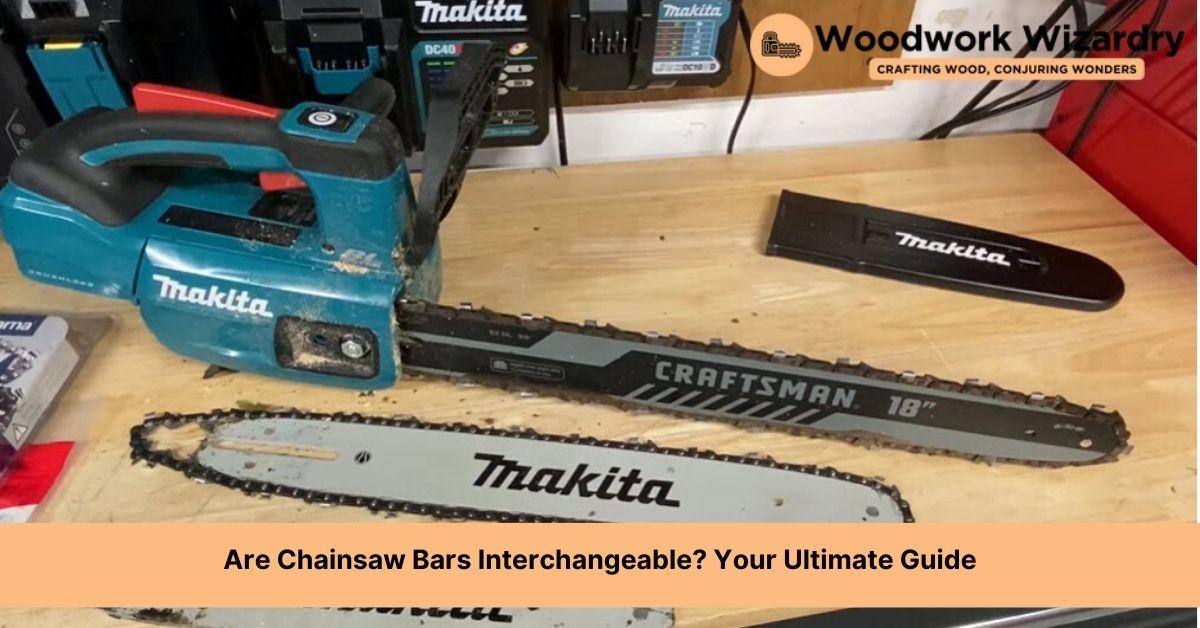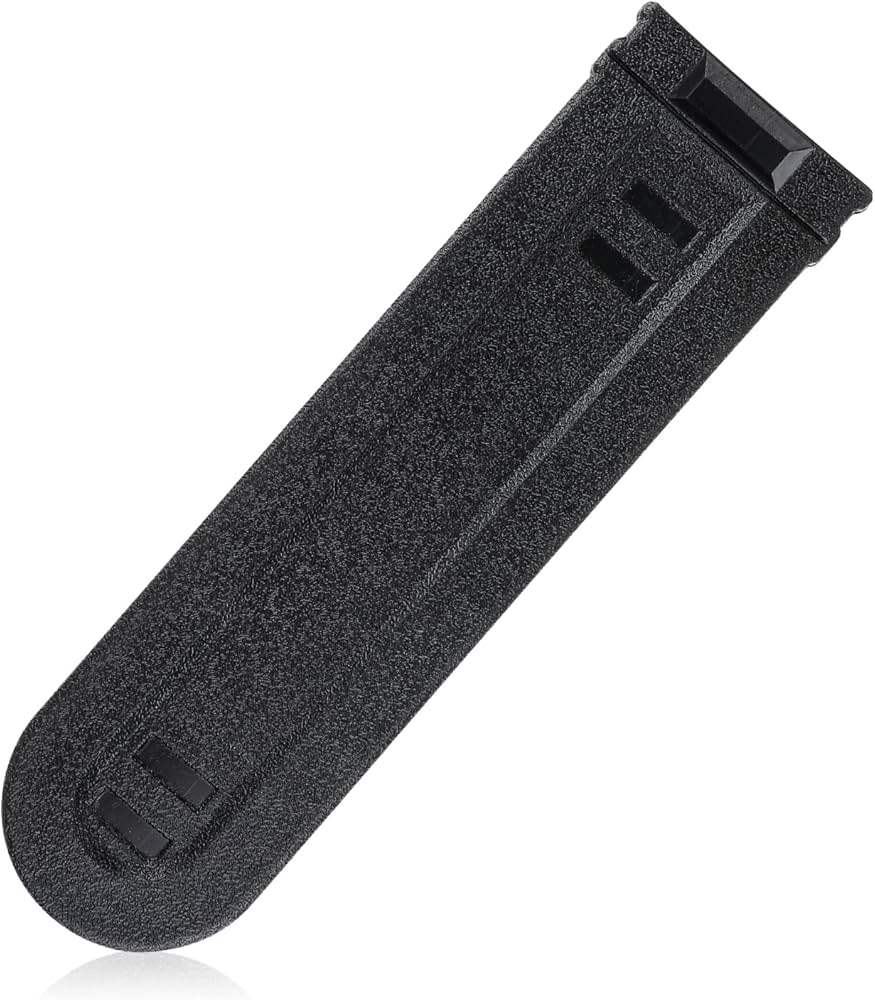No, chainsaw bars are not universally compatible. Different chainsaws require different bars to function correctly.
Chainsaws are essential tools for many tasks, from cutting firewood to felling trees. But, when it comes to maintenance, not all parts are interchangeable. Chainsaw bars, the long, flat component guiding the chain, vary by make and model. This means that a bar fitting one chainsaw might not fit another.
Understanding the specifics of chainsaw bars can save you time and frustration. It ensures your chainsaw operates efficiently and safely. Whether you’re a professional or a DIY enthusiast, knowing the right bar for your chainsaw is key. Dive in as we explore the details and help you make informed choices.

Credit: canberradiamondblade.com.au
Chainsaw Bar Basics
Understanding the basics of a chainsaw bar is essential for anyone using a chainsaw. The chainsaw bar is the long, flat piece of metal that guides the chain. It plays a crucial role in the cutting process. Knowing its components and how it functions can help you use your chainsaw more effectively.
Key Components
The chainsaw bar has several key components. The bar itself is made of strong steel. The groove along the edge holds the chain. The nose sprocket is found at the tip of the bar. It helps the chain move smoothly. Mounting slots are located at the base. These slots attach the bar to the chainsaw. Oil holes are small openings. They allow oil to lubricate the chain.
Functionality
The chainsaw bar guides the chain during cutting. The chain moves around the bar at high speed. This action allows the saw to cut through wood efficiently. The nose sprocket reduces friction. It helps the chain move easily. Proper lubrication from the oil holes is vital. It keeps the chain running smoothly. This reduces wear and tear. A well-maintained chainsaw bar ensures efficient and safe cutting.
Types Of Chainsaw Bars
Choosing the right chainsaw bar can make a difference in performance. There are various types of chainsaw bars available. Each type has unique features and benefits. Understanding these can help you make an informed decision.
Solid Bars
Solid bars are sturdy and durable. They are made from a single piece of steel. This makes them strong and reliable. Solid bars are ideal for heavy-duty tasks. They can handle thick wood and tough jobs. They are less likely to bend or break. However, they can be heavier than other types. This might make them harder to handle for some users.
Laminated Bars
Laminated bars are lighter and easier to use. They are made from layers of metal bonded together. This makes them strong yet flexible. Laminated bars are ideal for light to medium tasks. They are less likely to cause fatigue. They are also less expensive than solid bars. Laminated bars can be a good choice for beginners. They provide a good balance of strength and ease of use.
Factors Influencing Compatibility
Are chainsaw bars universal? The answer is not straightforward. Several factors influence the compatibility of chainsaw bars. Understanding these factors helps ensure you select the right bar for your chainsaw.
Bar Length
Bar length is a critical factor. Chainsaw bars come in various lengths. The length of the bar must match the specifications of your chainsaw. Using the wrong length can harm the chainsaw and reduce its performance.
Most chainsaws have a recommended bar length range. Check your chainsaw’s manual for the correct range. Choosing the correct bar length ensures safety and efficiency.
Mount Type
Another important factor is the mount type. The mount type refers to the shape and size of the bar’s mounting slot. Different chainsaws have different mount types.
Matching the mount type of the bar to your chainsaw is essential. An incorrect mount type can lead to improper fitting. This may cause the chainsaw to malfunction.
Always verify the mount type before purchasing a new chainsaw bar. Ensuring the right fit helps maintain the chainsaw’s performance.

Credit: woodworkwizardry.com
Chainsaw Bar Brands
Choosing the right chainsaw bar can be crucial for your tool’s performance. Different brands offer various features and qualities. Understanding these can help you make an informed decision.
Popular Brands
Several brands dominate the chainsaw bar market. Some of the most recognized names include Stihl, Husqvarna, and Oregon. Each of these brands has a strong reputation for quality and reliability.
Stihl chainsaw bars are known for their durability. They are a top choice among professionals. Husqvarna chainsaw bars offer excellent performance. They are suitable for both professionals and homeowners. Oregon chainsaw bars are versatile. They fit many chainsaw models.
Brand-specific Features
Each brand has unique features. Stihl chainsaw bars often include oil-retaining holes. These help keep the chain lubricated. This feature extends the bar’s lifespan. Husqvarna bars may offer low-vibration designs. These reduce user fatigue during long tasks.
Oregon chainsaw bars feature replaceable sprocket noses. This allows easy maintenance. It can also extend the bar’s life. Understanding these features helps you choose the best bar for your needs.
Interchangeable Bars
Interchangeable bars are a feature that many chainsaw users appreciate. They allow for flexibility and ease of use. With interchangeable bars, you can switch between different sizes. This can be very helpful for various cutting tasks.
Universal Fit Options
Some chainsaw bars are designed to fit multiple chainsaw brands. These universal fit options can save money and time. You do not need to buy a specific bar for each brand. This flexibility can be very convenient for many users. Look for bars that mention compatibility with various brands.
Limitations
Despite the benefits, not all bars are universal. Some chainsaws require specific bar types. These limitations can be due to unique design or safety standards. Always check your chainsaw’s manual before purchasing a bar. Using the wrong bar can damage your chainsaw or reduce its efficiency.

Credit: www.amazon.com
Choosing The Right Bar
Choosing the right chainsaw bar ensures your tool works efficiently. A suitable bar enhances performance and safety. But with many options, how do you pick the right one? This section will guide you through assessing needs and matching specifications.
Assessing Needs
First, identify your chainsaw’s purpose. Will you cut thick logs or trim small branches? Heavy-duty tasks need longer, sturdy bars. For light pruning, shorter bars work well. Consider the wood type too. Hardwoods demand durable bars. Softer woods can use less robust bars. Your project’s scale and frequency matter as well. Frequent use requires high-quality bars.
Matching Specifications
Next, match the bar’s specifications to your chainsaw. Check the bar’s length, width, and mount type. Ensure they fit your chainsaw model. Consult the chainsaw’s manual for these details. Compatibility is crucial. An ill-fitting bar affects performance. It can also damage the chainsaw. Look for the bar’s gauge and pitch. These should match your chainsaw’s chain. Incorrect specs reduce efficiency. They may even cause safety risks.
Maintenance And Care
Maintenance and Care of your chainsaw bar is crucial for its longevity and performance. Regular upkeep ensures the safety and efficiency of your equipment. Below are some essential tips for maintaining and caring for your chainsaw bar.
Cleaning Tips
Proper cleaning is vital. It removes debris and sap that can cause issues.
Follow these steps:
- Turn off and unplug the chainsaw.
- Use a brush to remove large debris.
- Wipe the bar with a clean cloth.
- For stubborn dirt, use a mild detergent and water.
- Dry the bar thoroughly to prevent rust.
Proper Storage
Storing your chainsaw correctly prevents damage and prolongs its life.
Consider these tips:
- Store in a dry, cool place.
- Keep the chainsaw away from direct sunlight.
- Use a chainsaw case for added protection.
- Ensure the chain is not in contact with hard surfaces.
- Check the bar and chain for damage before storage.
Proper maintenance and care ensure your chainsaw bar stays in top shape. Regular cleaning and correct storage are key.
Common Issues And Solutions
Chainsaw bars are vital components, but they often face issues. Knowing common problems and solutions can save time and money. This section will explore wear and tear, and provide a replacement guide.
Wear And Tear
Chainsaw bars endure immense pressure during use. This leads to wear and tear. Frequent usage can cause the bar to wear unevenly. An uneven bar affects cutting efficiency. It can also cause the chain to slip off. Regular inspection is key. Look for signs of wear on the bar’s edges. Check the groove where the chain sits. Is it worn out? If yes, it’s time for a replacement.
Replacement Guide
Replacing a chainsaw bar is straightforward. First, ensure the chainsaw is off and unplugged. Remove the chain by loosening the tensioner. Take off the old bar. Now, place the new bar in position. Ensure it aligns with the tensioner hole. Reattach the chain and adjust the tension. Make sure the chain fits snugly in the bar’s groove. Tighten the tensioner but do not overdo it. Finally, test the chainsaw. Ensure everything operates smoothly.
Frequently Asked Questions
Are Chainsaw Bars Interchangeable?
Not all chainsaw bars are interchangeable. Compatibility depends on the chainsaw model and manufacturer. Always check specifications.
How Do I Know If A Chainsaw Bar Fits?
Check the bar length, mount type, and chain pitch. Refer to the chainsaw’s manual for compatibility.
Can I Use Any Chain On My Chainsaw Bar?
No, chains must match the bar’s pitch, gauge, and length. Always use compatible chains.
Do Chainsaw Bars Differ In Quality?
Yes, chainsaw bars vary in quality. High-quality bars last longer and perform better. Choose reputable brands.
Conclusion
Choosing the right chainsaw bar is important for your tool’s performance. Not all chainsaw bars are universal. Check compatibility before purchasing a new bar. This ensures your chainsaw works efficiently and safely. Remember to consider the bar length, mount type, and chain pitch.
Proper maintenance also extends your chainsaw’s lifespan. Always follow the manufacturer’s guidelines. Happy cutting!
